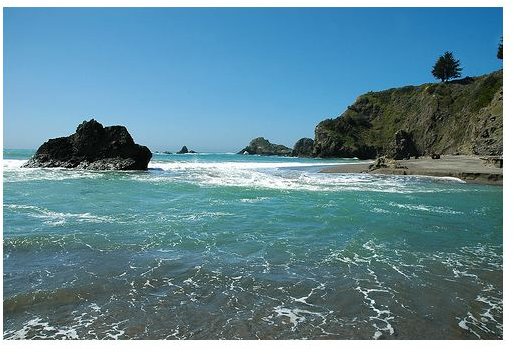Facts About Ocean Currents - Different Types of Ocean Currents
Ocean waters move from one region to another along established currents. A majority of the currents are circular in nature, operating between continents. They are important to the Earth’s climate, and subsequently to the existence of hundreds, if not thousands of species of animal and plant life. There are several facts about ocean currents to consider. There are two types of ocean currents: surface currents and deep water currents.
Image Credit: Flickr/Clinton Steeds
Surface Currents
Water on the surface of oceans moves along surface currents. The surface current consists of the first 1,300 feet of water. In total, surface currents contain about 10 percent of the total volume of water in all the oceans.
Surface currents tend to move in circular patterns and develop into the shape of a mound with a broad base and a relatively narrow top. These circular currents are found in each ocean and are known as gyres. In the northern hemisphere, the gyres rotate in a clockwise direction, while the gyres in the southern hemisphere rotate in a counterclockwise direction.
Surrounding the gyres are boundary currents. They hug the coastline of continents. Western boundary currents tend to be much stronger than Eastern boundary currents. Water travels hundreds of miles per day along Western boundary currents, whereas water in eastern currents may only travel a few miles per day. This is primarily due to the Earth’s rotation, which causes the water to flow to the western edge of the ocean basin.
Deep Water Currents
The remaining 90 percent of the ocean moves with deep water currents. Deep water is different from surface water in two distinct ways. Deep water is much colder than surface waters, and deep water has a higher salt content. When salty water from a warm region is transported to a region that is cold, it tends to sink. This difference in density causes deep water currents.
The Atlantic deep water region is produced by the Gulf Stream. It carries warm water containing a lot of salt to the North Atlantic Ocean, where the water cools and sinks. This process is also known as Thermohaline Circulation.
Primary Forces Which Initiate Currents
One of the lesser known facts about ocean currents is that the main driver of ocean currents is solar heating. As the sun heats the surface of the oceans, the water expands. The water near the equator is slightly elevated above the water at higher and lower latitudes. This creates a slope and water flows down.
Wind is another force that causes ocean currents. Uneven heating by the sun creates winds which blow across the water’s surface. The Earth’s spin also creates winds that blow across the ocean. Trade winds are located near the equator, while the Westerlies blow in the middle latitudes. Water tends to accumulate in the direction of the wind.
Secondary Forces Which Direct Currents
Gravity is one of the forces which establishes the direction of the ocean currents. Gravity pulls water down the slope created by solar heating. The Coriolis also plays a part in directing ocean currents. Its effect on gravity creates the geostrophic current, which directs water to the right in the northern hemisphere and to the left in the southern hemisphere.
The oceans are driven by surface currents and deep water currents. Surface currents make up 10 percent of the ocean water, while the remaining 90 percent are part of deep water currents. Solar heating and wind are the forces which produce ocean currents. Gravity and the Coriolis work together to force currents in a particular direction.
Reference
“Ocean Currents and Climate.” USC Earth Sciences https://earth.usc.edu/~stott/Catalina/Oceans.html
“Deep Water Formation.” USC Earth Sciences https://earth.usc.edu/~stott/Catalina/Deepwater.html
“Ocean Currents.” Ocean Planet https://seawifs.gsfc.nasa.gov/OCEAN_PLANET/HTML/oceanography_currents_1.html
